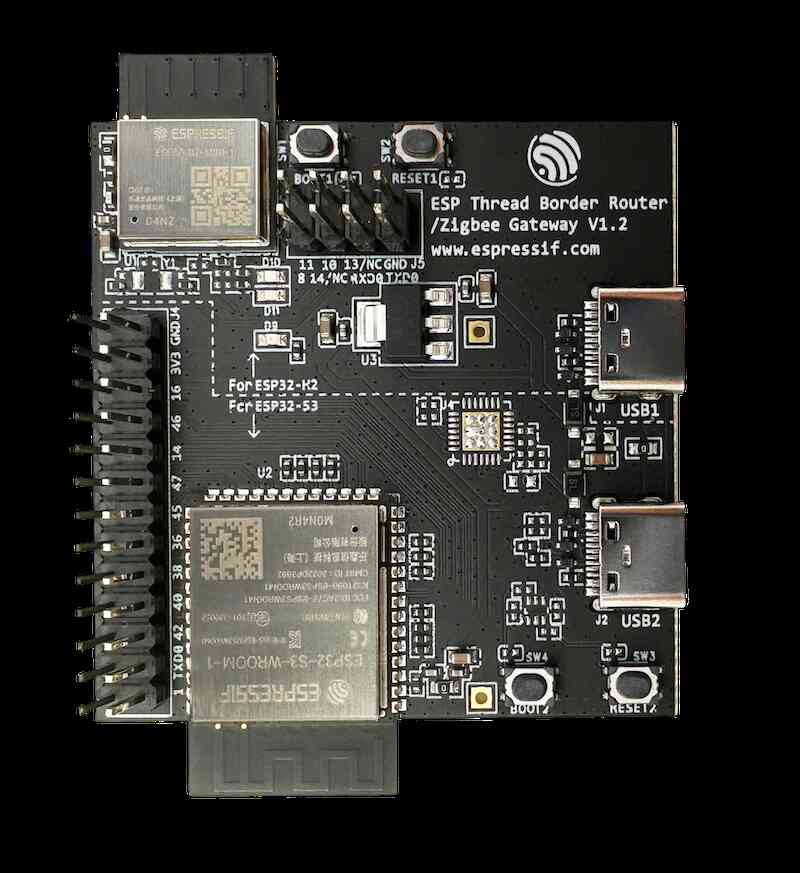ESP Thread border router is a FreeRTOS-based implementation running on a combination of Espressif's Wi-Fi and 802.15.4 SoCs.
Hardware requirements:
Espressif provides an ESP Border Router Board which integrates the host SoC (ESP32-S3) and the RCP (ESP32-H2) into one module.
You only need to connect the board to the ESP32-S3 (main SoC) port. The main SoC automatically programs the Thread co-processor.
Hardware platforms

Set up Repositories
To set up the environment and for information specific to Windows, please follow the official installation guide.
Clone the esp-idf and the esp-thread-br repository.
git clone -b v5.1.2 --recursive https://github.com/espressif/esp-idf.gitcd esp-idf./install.sh. ./export.shcd ..git clone -b v1.0 --recursive https://github.com/espressif/esp-thread-br.git
Configure the Thread and the Wi-Fi network
The border router will automatically join the Wi-Fi network and create a new Thread network if there is not one in its storage. The network parameters can be configured in the config menu:
cd esp-thread-br/examples/basic_thread_border_routeridf.py menuconfig
The network configuration items are:
- Enable automatic start mode in Thread Border Router: ESP Thread Border Router Example > Enable the automatic start mode in Thread Border Router.
- Wi-Fi SSID and PSK: Example Connection Configuration > connect using Wi-Fi interface
- Thread network parameters: Component config > OpenThread > Thread Operational Dataset
Build and run the border router
Build the esp-idf/examples/openthread/ot_rcp example. The firmware doesn't need to be explicitly flashed to a device. It will be included in the Border Router firmware and flashed to the ESP32-H2 chip upon first boot (or the RCP firmware changed).
cd ${IDF_PATH}/examples/openthread/ot_rcpidf.py set-target esp32h2idf.py build
Then go back to the basic_thread_border_router example folder.
cd esp-thread-br/examples/basic_thread_border_routeridf.py set-target esp32s3idf.py buildidf.py -pflash monitor
Now you'll see the border router output in the ESP32S3 monitor. It also provides an interactive OpenThread command line:
state
leader
Done
>
Supported features
- Border agent for external commissioners.
- IPv6 bidirectional connectivity.
- SRP service registration and advertising proxy.
- mDNS discovery proxy.
- NAT64.
- Multicast forwarding.
- Web GUI based REST API.
- OTA.
For more using of the ESP Thread Border Router, you can refer to ESP Thread Border Router Codelab

